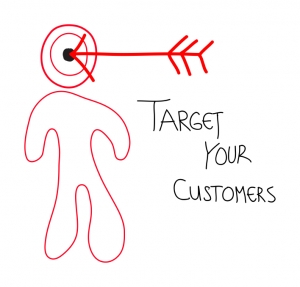
You’ve got a product or service, a team that believes in it, and a market that needs it—now what? Selling it, of course, but not with a shrug and a hope. Sales, marketing, and storytelling are where businesses win or spiral, and if you’re working with a lean crew, the stakes and the focus sharpen. You need tactics that punch above your size and messaging that doesn’t just land, it sticks. The good news? Creativity is cheaper than a bloated ad budget, and resourcefulness often outpaces experience. Let’s get into how to shape your pitch, tighten your strategy, and make your story sing.
Start with a pitch that makes people stay
Sales pitches shouldn’t feel like someone reading bullet points off a brochure. You want rhythm, voice, tension, and resolution. The goal isn’t to sell a product, it’s to sell a shift in thinking, a new convenience, or a fix they didn’t know they needed. So how do you do it? Strip it back to the problem and build the pitch around the solution, using language that invites, not pressures. A perfect sales pitch weaves customer pain points into an effortless narrative with a clear next step. If you sound like every other team with a script and a smile, you’ll disappear with them too.
Market with movement, not noise
Marketing only works when it’s aimed, not sprayed. Start by figuring out where your audience already spends their time—scrolling Instagram reels, opening local newsletters, searching YouTube tutorials—and meet them there. From there, consistency beats virality every time. A steady drip of content that informs, entertains, or sparks curiosity builds more brand recall than a one-off blitz. This is especially true for budget-conscious teams who need bang for every buck and second. For inspiration, these small business marketing ideas show how scrappy campaigns can still dominate attention spans.
Tell a story that actually matters
Nobody remembers taglines, they remember feelings. That’s the whole point of a brand narrative—it’s the emotional thread that ties everything together. You’re not just a boutique coffee roaster, you’re the shop that sponsors open mic nights and buys beans from farmers by name. Stories like that are sticky, shareable, and defensible against cheaper competitors. The mistake most small businesses make? Talking about themselves too much and their customers too little. Study compelling brand narratives and you’ll see that it’s always the audience who ends up the hero.
Go back to school without pausing your business
If your marketing or sales muscles feel flabby, there’s no shame in hitting the books again. Earning a business management degree will help you gain skills in operations, marketing, and sales—yes, all three, which is what most small team leaders need. What’s even better is how flexible the programs have become. You can go here to see how online courses make it possible to stay in the trenches while sharpening your strategy. Nights, weekends, even lunch breaks can turn into workshop hours. It’s a long play, but one that stretches your ceiling for the years ahead.
Let feedback shape your messaging
Forget guesswork. You’ve got emails, DMs, comment threads, reviews, even eye rolls at the end of your pitch—data is dripping from every edge of your business. The trick is creating systems that feed that data back into your approach without clogging your workflow. Use surveys, ask blunt questions, and don’t flinch at the answers. Your customers will write your next pitch if you let them. Start integrating feedback loops into your team’s weekly rhythm and you’ll find your voice evolving to match what people actually care about.
Proof it works: entrepreneurs are doing it
Sometimes the best advice is a mirror. When you see someone who looks like you—same hurdles, same goals—succeeding through education, the theory becomes real. One entrepreneur goes back to business school and finds their voice stronger, their strategy sharper, their brand more magnetic. That’s the ripple effect of learning with intention. It’s not a retreat from the hustle, it’s a weapon you bring back to it. And you’re not chasing a degree, you’re carving out a longer runway for your business. You’ll think longer, act faster, and speak louder.
There’s no one-size script or silver bullet when you’re pitching with heart, marketing on a shoestring, and building a brand story that feels like yours. But there are instincts you can sharpen and strategies you can test, discard, or double-down on. Be the team that keeps learning, that writes fast and edits with curiosity. Chase feedback like it’s a cofounder. Take your voice seriously, because nobody else will until you do. And if that means going back to school or rewriting your pitch for the twentieth time, well, that’s just business.
Chantal Briggs created Neighbors Needed to make it easier for community members everywhere to connect with their neighbors, build strong relationships, celebrate one another, and in turn, create communities where everyone can thrive. The site offers resources and advice on how to make strong neighborly connections and build safer communities.











Follow us online!